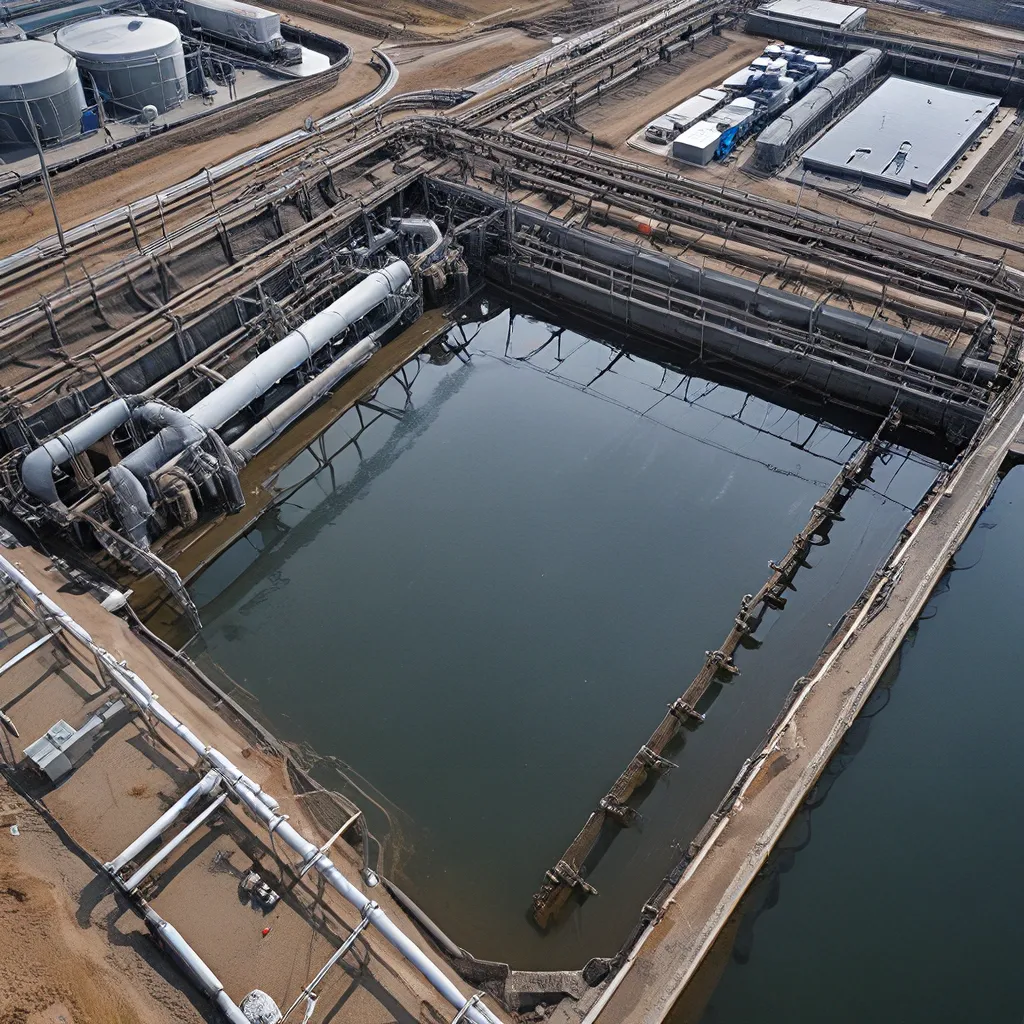
In today’s world, where water scarcity and environmental concerns loom large, the role of innovative technologies in revolutionizing wastewater treatment has become increasingly crucial. As we grapple with the looming water crisis facing nations like India, the integration of artificial intelligence (AI) and the Internet of Things (IoT) has emerged as a beacon of hope, transforming traditional water management practices.
The AI-Powered Wastewater Treatment Revolution
I’m excited to delve into how this remarkable technological convergence is empowering wastewater treatment professionals to make more informed decisions and optimize their operations. By harnessing the power of real-time monitoring, predictive analytics, and asset optimization, we’re witnessing a remarkable shift in the way we manage our precious water resources.
Revolutionizing Traditional Practices
The integration of AI and IoT has marked a significant turning point in the water management landscape. These cutting-edge technologies have enabled a fundamental shift in the way we approach wastewater treatment, moving away from reactive and manual processes to more proactive and data-driven solutions.
One of the key advancements is the ability to monitor water systems in real-time, providing valuable insights into usage patterns, system performance, and even the detection of leaks. This real-time data empowers wastewater treatment professionals to make informed decisions, respond to issues promptly, and optimize their operations for maximum efficiency.
Proactive Measures for Wastage Prevention
But the benefits of AI-powered wastewater treatment go far beyond just monitoring. Through the power of predictive analytics, these advanced systems can forecast future water demand and usage patterns, enabling stakeholders to take proactive measures to prevent water wastage and optimize distribution networks.
Imagine being able to anticipate potential spikes in water usage or identify areas prone to leaks before they even occur. This level of foresight allows for timely interventions, ensuring that precious water resources are not lost and that distribution systems run at peak efficiency.
Accurate Prediction of Future Water Demand
One of the most fascinating aspects of AI-driven wastewater treatment is its ability to accurately forecast future water demand. By analyzing historical data, weather patterns, and population growth trends, these algorithms can paint a clear picture of the water needs of tomorrow, facilitating efficient resource allocation and mitigating the risk of scarcity scenarios.
This predictive power empowers water management authorities to make strategic decisions, whether it’s investing in infrastructure upgrades, implementing conservation measures, or optimizing the distribution of water resources. By staying one step ahead, we can ensure the long-term sustainability of our water supply.
Unlocking the Potential of AI and IoT in Wastewater Management
As we dive deeper into the world of AI and IoT in wastewater treatment, it’s evident that these technologies are not just transforming the industry, but also paving the way for a more sustainable future.
Runoff Management and Asset Optimization
One area where AI and IoT are making a significant impact is runoff management. By integrating these technologies into stormwater and wastewater infrastructure, water management professionals can better understand and control the flow of water, optimizing asset usage and enhancing the overall efficiency of the system.
Imagine a scenario where sensors embedded throughout the network continuously monitor water levels, flow rates, and precipitation patterns. Armed with this real-time data, AI-powered systems can make dynamic adjustments to control valves, pumps, and other assets, ensuring that runoff is effectively managed and that infrastructure is utilized to its full potential.
Streamlined Operations for Sustainability
But the benefits of AI and IoT in wastewater treatment go beyond just optimization and efficiency. These technologies are also enabling more sustainable water management practices by providing continuous monitoring and analysis of data.
Alpha Wastewater, for example, has been at the forefront of leveraging AI and IoT to streamline their operations and promote long-term sustainability. By constantly monitoring and adjusting their systems, they’ve been able to reduce water waste, optimize energy consumption, and ensure that their wastewater treatment processes are not only effective but also environmentally responsible.
The Future of Wastewater Treatment: Embracing AI and IoT
As we look to the future, the integration of AI and IoT in wastewater treatment holds immense promise. These technologies are not only transforming the industry but also paving the way for a more sustainable and resilient water management ecosystem.
Through real-time monitoring, predictive analytics, and asset optimization, wastewater treatment professionals can make more informed decisions, prevent water wastage, and ensure the efficient allocation of resources. And as these technologies continue to evolve, we can expect even more sophisticated and impactful solutions to emerge.
However, it’s important to remember that the journey towards a fully AI-powered wastewater treatment system is not without its challenges. Ongoing research and development, as well as responsible deployment, will be crucial in navigating the complexities and uncertainties that may arise.
Conclusion: A Sustainable Water Future Powered by AI and IoT
As we grapple with the global water crisis, the integration of AI and IoT in wastewater treatment offers a glimmer of hope. By harnessing these powerful technologies, we can revolutionize traditional practices, make more informed decisions, and optimize our water management systems for a more sustainable future.
The future is bright, and the possibilities are endless. I’m excited to see what the next chapter holds as we continue to push the boundaries of what’s possible in the realm of wastewater treatment and beyond. Let’s embrace this technological revolution and work together to ensure that our most precious resource – water – is managed with the care and foresight it deserves.